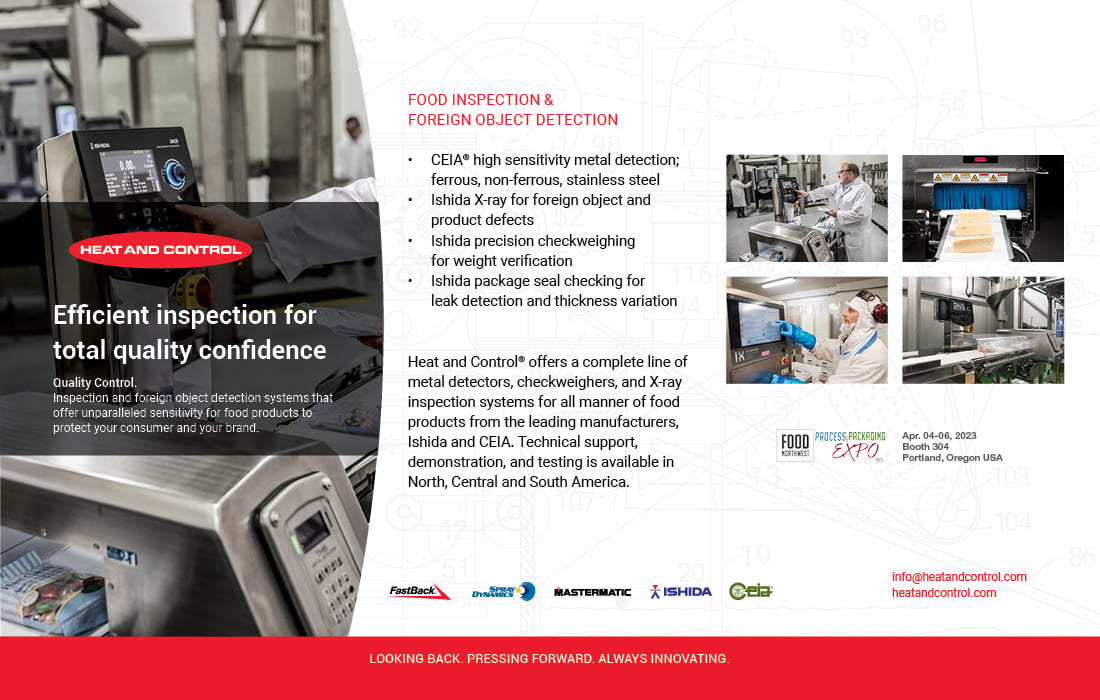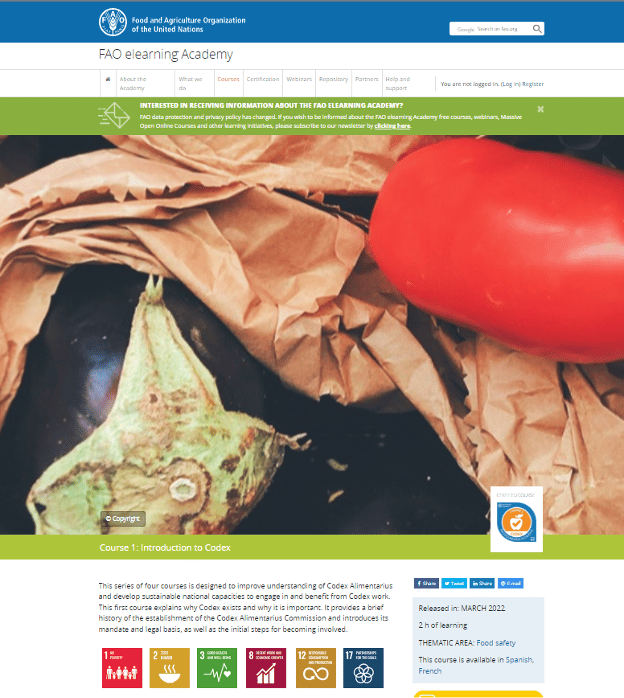
SCROLL
DOWN
Senate Confirms Esteban as USDA Under Secretary for Food Safety
Image credit: Dr_Microbe/iStock / Getty Images Plus via Getty Images

On December 23, 2022, the Senate voted to confirm Dr. Jose Emilio Esteban as the U.S. Department of Agriculture's (USDA's) sixth Under Secretary for Food Safety. The action came on the last day before the 177th Congress expired. President Biden nominated Esteban as the nation's sixth Under Secretary for Food Safety at USDA on November 15, 2021. The Senate Committee on Agriculture, Nutrition, and Forestry was tasked with reviewing the nomination, but it did not give Esteban a hearing until September 27, 2022. The office remained vacant while waiting for the Senate to act.
Dr. Esteban started his tenure at USDA's Food Safety and Inspection Service (FSIS) in 2001 and held the roles of laboratory director for the Western Laboratory, scientific advisor for laboratory services and research coordination, and executive associate for laboratory services. In 2018, he was appointed chief scientist of FSIS. In his role, Dr. Esteban provides scientific advice to support agency policies including the disciplines of microbiology, chemistry, and pathology. Prior to joining USDA, Dr. Esteban worked at the U.S. Centers for Disease Control and Prevention (CDC) as an epidemic intelligence service officer, staff epidemiologist, and assistant director of the Food Safety Office.
He currently serves as the chair for the Codex Alimentarius Commission Committee on Food Hygiene, the committee where international food hygiene standards are defined for international trade. He is also currently vice president of the International Association for Food Protection. Trained as a veterinarian in Mexico, Dr. Esteban supplemented his training with an MBA, a master's degree in Preventive Veterinary Medicine, and a Ph.D. in Epidemiology from the University of California, Davis.
On November 15, 2022, the U.S. Food and Drug Administration (FDA) issued its final rule on Requirements for Additional Traceability Records for Certain Foods (Food Traceability Final Rule) under the Food Safety Modernization Act (FSMA) Section 204(d). The Food Traceability Final Rule is designed to facilitate faster identification and rapid removal of potentially contaminated food from the market, resulting in fewer foodborne illnesses and associated deaths.
The compliance date for all operations subject to the recordkeeping requirements of the Food Traceability Final Rule is January 20, 2026. FDA clarified that no records will be requested prior to the compliance date, and that the agency will engage in stakeholder outreach, technical support, and education prior to and after January 20, 2026. FDA will provide similar support and translations of the final rule and relevant communications for foreign trading partners, as well.
Foods subject to the final rule requirements appear on the Food Traceability List (FTL). The FTL includes fresh-cut fruits and vegetables, shell eggs, and nut butters, as well as certain fresh fruits, fresh vegetables, ready-to-eat (RTE) deli salads, cheeses, and seafood products. FDA clarified that frozen foods are not included on the FTL; however, ingredients used in final food products will be subject to the final rule if the ingredients remain in the form specified on the FTL.
At the core of the final rule is a requirement that individuals who manufacture, process, pack, or hold food on the FTL maintain records including Key Data Elements (KDEs) related to Critical Tracking Events (CTEs). When requested by FDA, covered firms and farms, retail food establishments, and restaurants will be required to provide information to the agency within 24 hours, or another reasonable time to which FDA agrees. Records may be requested in the event of food safety incidents, and records for individual establishments may be kept offsite as long as they are able to be produced onsite within 24 hours.
The final rule provides full and partial exemptions for some entities and foods, such as certain small producers, small retail food establishments and restaurants, farms that sell food directly to consumers, foods that receive certain types of processing, and other specified operations. The final rule aligns with current industry best practices and covers domestic firms, retail food establishments, restaurants, and farms, as well as foreign firms and farms producing food for U.S. consumption.

FDA Issues FSMA Food Traceability Final Rule
FDA Releases New Food Fraud Webpage
The U.S. Food and Drug Administration (FDA) has released a new website on economically motivated adulteration (EMA), including food fraud. The purpose of the website is to keep businesses and consumers informed on the latest food fraud developments.
The website includes links on how to report food fraud; examples of food adulteration; how food fraud is detected and monitored; enforcement and legal consequences, such as recalls, seizures, and import refusals; guidance documents to assist manufacturers and importers; and a list of import alerts.
EMA occurs when "someone intentionally leaves out, takes out, or substitutes a valuable ingredient or part of a food," according to FDA. EMA also occurs when a substance is added to a food to make it appear better or of greater value.
Food fraud is a common type of EMA that FDA investigates, but EMA also occurs with other products, including animal food and cosmetics. Some types of EMA are also misbranding violations. Estimating how frequently food fraud occurs or its exact economic impact can be challenging because food fraud is designed to avoid detection. Outside estimates by experts have found that food fraud affects 1 percent of the global food industry at a cost of approximately $10–$15 billion per year, although more recent expert estimates peg the cost as high as $40 billion per year.
Food fraud can also lead to major health issues and even death. Some examples include lead poisoning from adulterated spices and allergic reactions to a hidden or substituted ingredient that contains a small amount of just one food allergen.
Click here to visit FDA’s new EMA website.
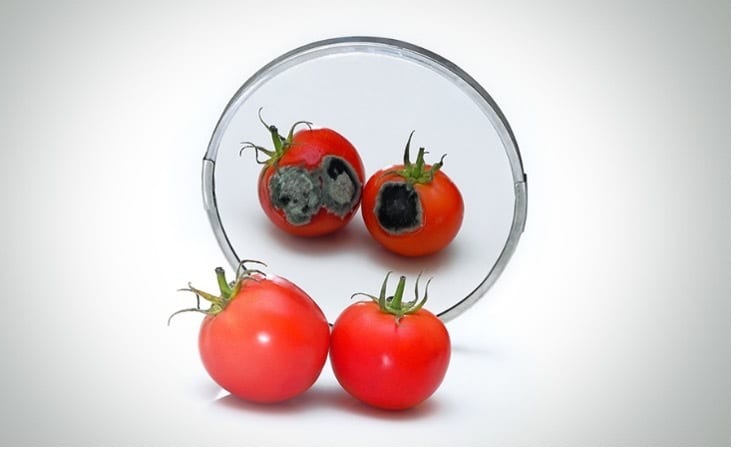
Image credit: Dr_Microbe/iStock / Getty Images Plus via Getty Images
The Reagan-Udall Foundation has published its independent review of FDA's Human Foods Program, highlighting key findings and providing recommendations regarding organizational culture, structure, resources, and authorities. The evaluation will be used to "inform a new vision for the FDA Human Foods Program," according to FDA Commissioner Robert M. Califf, M.D., M.A.C.C. Dr. Califf suggested that FDA's "new vision" might include restructuring the existing Human Foods Program and its leadership, identifying new sources of funding, advancing the agency's critical inspectional activities, and upgrading digital technology systems.
In July 2022, Dr. Califf commissioned the Reagan-Udall Foundation to convene an independent expert panel to assess the agency's Human Foods Program, which includes the Office of Food Policy and Response (OFPR), the Center for Food Safety and Applied Nutrition (CFSAN), and relevant parts of the Office of Regulatory Affairs (ORA). The aim of the evaluation was to strengthen FDA's food regulatory role. The review was commissioned following pressing food safety and security challenges that arose during 2022, such as the infant formula safety and supply crises.
Culture
The Reagan-Udall Foundation expert panel considered input from internal and external stakeholders, including FDA staff, to review the culture of the Human Foods Program. The panel found that, despite the dedication of staff members, the culture of the Human Foods Program inhibits the agency's ability to effectively protect public health. The report points to the Human Foods Program's lack of clear vision and mission, disparate structure and consensus governance model, and the lack of a strong leader and ultimate authority. In particular, the lack of a clear, overarching leader for the Human Foods Program has contributed to a culture of indecisiveness. Additionally, the absence of a unifying mission and definition for the Human Foods Program has led to a fragmented staff, overlapping roles, competing priorities, and a lack of communication that result in what is perceived as "constant turmoil," according to the report.
The report also underlines the fact that the Human Foods Program's reliance on consensus has significant drawbacks for making decisions about taking regulatory action, and that the program must shift its culture of risk aversion to one that embraces well-informed risk-taking. Furthermore, a culture of cooperation and accountability in the Human Foods Program's field operations needs to be reestablished.
Structure
Regarding organizational structure of FDA's Human Foods Program, the expert panel found that there is no clear leader or decision-maker, outside of the Commissioner. Although the missions of CFSAN and OFPR have differences on paper, staff are often left wondering which program is responsible for decision-making. A Human Foods Program Governance Board was established in 2014 to facilitate coordinated decision-making, but it has not effectively addressed structural challenges.
Particularly problematic is the fact that ORA's implementation of policies and field work is largely independent of CFSAN, the organization that is responsible for developing and writing the policies that are then discharged with a majority of ORA's funding. Additionally, CFSAN's dual focus on food safety and nutrition—in addition to its dietary supplements and cosmetics charges—results in the center's nutrition-related responsibilities receiving lesser priority.
Resources
The expert panel agreed that the Human Foods Program is "significantly under-resourced" and in urgent need of additional personnel, financial, and information technology (IT) resources to effectively execute its duties. Funding and staffing for the Human Foods Program has grown insufficiently and at a slower pace than almost all other components of FDA. The report exemplifies CFSAN, the budget for which has remained relatively flat for more than a decade; in comparison, funding for the Human Drugs Program increased 121 percent over the same period.
Additionally, the Human Foods Program does not fully utilize its industry fee authorities provided by the Food Safety Modernization Act (FSMA) to augment its budget. FDA user fee programs account for 46 percent of the agency's overall budget, but only 1 percent of the budget for the Human Foods Program. In comparison, FDA's tobacco and human drugs activities are 100 percent and 66 percent funded by their industry user fee programs, respectively.
The Human Foods Program's insufficient budget has led to difficulties with staffing, which has also remained relatively flat since 1978, despite growing responsibilities for CFSAN under FSMA. Finally, the lack of an overarching plan and adequate resources has led to the inability for FDA to optimize IT systems. Inadequate financial, personnel, and IT resources have impeded the Human Foods Program's implementation of FSMA, as well as nutrition labeling, food additive, and Generally Recognized as Safe (GRAS) designation reviews.
Authorities
In light of FDA's increasing responsibility for food safety standard-setting and oversight, the expert panel identified areas in which it is urgent for the agency to be bolder in exercising its authorities, specifically: collecting user fees, GRAS designation, data-sharing, mandatory recall, and nutrition labeling. Finally, the expert panel proposed a list of potential new FDA authorities that would strengthen the Human Foods Program.
A New Vision
Based on the independent external review by Reagan-Udall and a separate internal review of the agency's infant formula supply chain response, FDA will formulate its "new vision" for the Human Foods Program and release a public update at the end of January 2023. The agency also plans to release additional public updates by the end of February 2023 that include plans for FDA's leadership structure and any changes to key internal processes and procedures. Final decisions regarding the future of the Human Foods Program will be informed by input from a group of agency leaders convened by Dr. Califf.
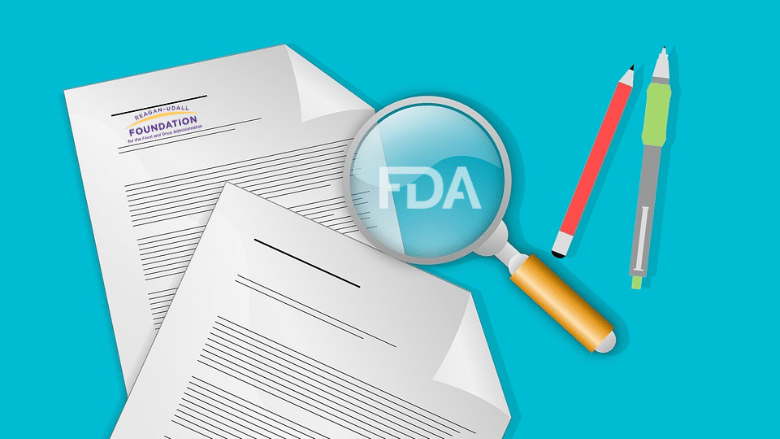
Reagan-Udall Review Guides "New Vision" for FDA Human Foods Program
FDA has released an outline of a prevention strategy that is under development to prevent Cronobacter sakazakii contamination of powdered infant formula. The prevention strategy is being developed in response to the prolific recall of Abbott Nutrition powdered infant formula that occurred in February 2022. The formula in question was recalled after FDA investigators found insanitary conditions in Abbott Nutrition's Sturgis, Michigan manufacturing facility, which possibly contributed to Cronobacter sakazakii infections in four infants.
The recall added further pressure to an already stressed supply chain, resulting in a shortage that made it difficult for caregivers of infants to find certain powdered infant formula products throughout 2022. While the supply of infant formula products has been steadily increasing and FDA continues to work with manufacturers to maximize production and fill store shelves, the present strategy will outline the agency's path toward enhancing the safety of powdered infant formula products. Additionally, FDA was mandated by the U.S. Senate in June 2022 to take actions to better ensure the safety of the U.S. infant formula supply.
Actions highlighted in the prevention strategy outline include:
- Collaboration with stakeholders to better understand best practices in the manufacturing of powdered infant formula and what could be done to enhance safety
- Strengthening regulatory activities and current systems for effective oversight of powdered infant formula, including reviewing and updating the Infant Formula Compliance Program, as needed, to reflect current science on Cronobacter and ensure that investigators and compliance officers are equipped with the tools and resources required to enable a consistent and comprehensive approach to inspections of infant formula manufacturing facilities and compliance activities
- Reviewing and updating current guidance and rules applicable to the production of powdered infant formula, as appropriate
- Evaluating current testing requirements and determining whether improvements might be appropriate to enhance the safety of finished product
- Continual development and improvement of communications for consumers about safe formula preparation and storage
- Working with federal, state, and local partners to strengthen the ability of public health officials and firms to identify and investigate illnesses of all species of Cronobacter, including increased genomic surveillance and supporting the elevation of Cronobacter sakazakii infection among infants as a nationally notifiable disease
- Conducting and supporting research to fill knowledge gaps in the scientific understanding of Cronobacter, such as through collaboration with the National Advisory Committee on Microbiological Criteria for Foods (NACMCF).
The powdered infant formula prevention strategy is the third prevention strategy released by the agency, following those for bulb onions and imported enoki and wood ear mushrooms. FDA and industry representatives also discussed the development of such prevention strategies on a recent episode of the Food Safety Matters podcast.
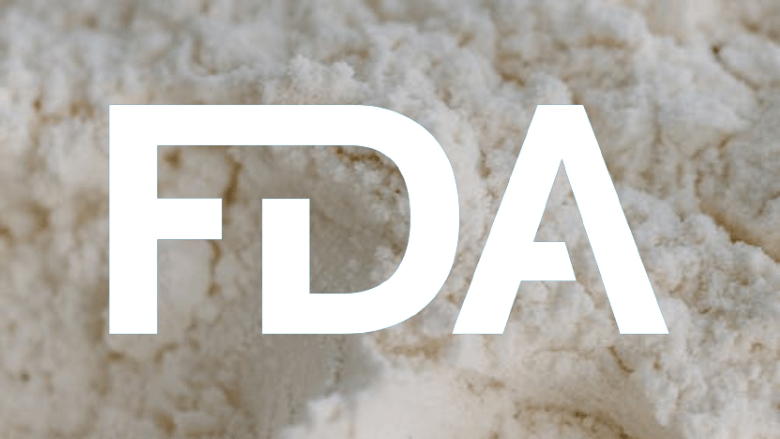
FDA Prevention Strategy to Enhance Infant Formula Safety Supports Elevating Cronobacter to Nationally Notifiable Disease
FDA has highlighted a voluntary guidance document on food safety best practices for direct-to-consumer and third-party food delivery services. The guidance features several updates from the original draft, such as recommended practices for transportation directly to a consumer of perishable products, to include proper packaging; temperature control during shipping, receiving, and storage; return of compromised and abused products; and other food safety related topics.
The primary intent of the document is to provide best practices for preventing the biological, physical, and chemical contamination of foods, as well as the growth of harmful bacteria and the formation of toxins within food being transported. Specifically, the guidance includes parameters relevant to:
- Preventive controls
- Mechanisms to assess risk
- Validation and verification practices
- Recommendations for proper packaging
- Temperature control
- Receiving and storage
- Physical and chemical contamination control
- Allergen control
- General food safety information
- Suggestions for the return of compromised and abused products.
The guidance is not intended to provide a one-size-fits-all approach; rather, it aims to review some of the essential parameters that any company should consider in providing safe foods to consumers. Companies are encouraged to research, understand, and test the methods best suited to their specific operations. The guidance was prepared by the 2018–2020 Conference for Food Protection (CFP) Direct-to-Consumer Delivery Committee, and the document's presentation at CFP was postponed to 2021 due to the COVID-19 Pandemic.

Guidance on Food Safety Best Practices for Food Delivery Businesses
The European Commission has established maximum levels for per- and polyfluoroalkyl substances (PFAS) in certain foods. The change went into effect January 1, 2023, after which date companies may not sell foods that exceed the maximum levels for PFAS. Foods that were lawfully placed on the market before January 1, 2023 were allowed to remain on the market until their date of minimum durability or use-by date.
The maximum levels are laid out in Regulation (EC) 2022/2388, amending Regulation (EC) 1881/2006. The regulation specifically focuses on limits for perfluorooctane sulfonic acid (PFOS), perfluorooctanoic acid (PFOA), perfluorononanoic acid (PFNA), and perfluorohexane sulfonic acid (PFHxS), which are types of PFAS that are or have been widely used for commercial and industrial purposes.
Additionally, a July 2020 Scientific Opinion from the European Food Safety Authority (EFSA) concluded that PFOS, PFOA, PFNA, and PFHxS can cause developmental effects and may have adverse effects on serum cholesterol, the liver, the immune system, and birth weight. EFSA considered the effects of PFAS on the immune system as the most critical, and established a group tolerable weekly intake (TWI) of 4.4 nanograms per kilogram of body weight (ng/kg) per week for the sum of PFOS, PFOA, PFNA, and PFHxS.
EFSA also concluded that the EU population's exposure to PFOS, PFOA, PFNA, and PFHxS exceeds the determined TWI. The bioaccumulation of PFAS in the environment, as well as the use of PFAS in food contact materials, have led to increasing human exposure to the chemicals.

EU Sets Limits for PFAS in Certain Foods
FDA has issued revised food safety standards for state regulatory programs that oversee food facilities that manufacture, process, pack, or hold foods. The regulatory program standards, known as the Manufactured Food Regulatory Program Standards (MFRPS), were first issued by the agency in May 2007. The 2022 changes include updates to defined terms and new job aides, as well as updates to the current standards.
MFRPS are intended to achieve basic equivalency in food safety standards and laws, and in inspection programs and practices among state and federal regulators. The standards are a critical component in establishing the national Integrated Food Safety System. The goal of MFRPS is to implement a nationally integrated, risk-based food safety system focused on protecting public health. MFRPS establishes a uniform basis for measuring and improving the performance of prevention, intervention, and response activities of manufactured food regulatory programs in the U.S.
MFRPS comprise ten standards designed to protect the public from foodborne illness and injury. The standards include the program's regulatory foundation, staff training, inspection, quality assurance, food defense preparedness and response, foodborne illness and incident investigation, enforcement, education and outreach, resource management, laboratory resources, and program assessment.

FDA Updates Manufactured Food Regulatory Program Standards
Food Allergy Canada has released its Allergen Management Guidelines for Food Manufacturers, which includes online training and a user guide. The guidelines aim to support Canadian food and beverage manufacturers in managing allergens in their facility, enhancing food safety for consumers with allergies. Considered a chemical hazard, allergens must be effectively managed throughout the food and beverage manufacturing process with preventive control measures, in accordance with the Safe Food for Canadians Act.
Food Allergy Canada, in collaboration with Université Laval's Food Risk Analysis and Regulatory Excellence Platform, Maple Leaf Foods, and leading food manufacturers, developed the guidelines to help Canadian food and beverage manufacturers manage allergens in their facilities and guide their decisions on the appropriate use of precautionary allergen labeling. The Allergen Management Guidelines provide a framework for Canadian food and beverage manufacturers on how to develop an allergen control plan or assess their current plan within their facilities. The guidelines also include recommendations on the use of precautionary allergen labeling to ensure it can be used as an effective risk communication tool.
The guidelines offer Canadian manufacturers a risk-based approach to manage food allergens, with the aim to meet Canadian food regulatory requirements while aligning with the most recent international advice from the World Health Organization (WHO) and Food and Agriculture Organization of the United Nations (FAO) Expert Consultation on food allergen risk assessment methodologies and allergen thresholds.

Food Allergy Canada Releases Allergen Management Guidelines, Focus on Labeling

Felicia Wu, Ph.D., a John A. Hannah Distinguished Professor and an international expert on food safety at Michigan State University, has been appointed president-elect of the international organization Society for Risk Analysis.
In late December, the U.S. Senate confirmed Douglas J. McKalip as Chief Agricultural Negotiator for the Office of the U.S. Trade Representative.
NSF has promoted Samuel Cole to Director of Product Certification—Equipment and Chemical Evaluation, Global Food Division and Sonia Acuña-Rubioto Director of Food Product Certification, Global Food Division.
Key Technology has appointed Jack Lee as President, Key Technology—Americas.
Paul Slupecki has been appointed as Head of TOMRA Fresh Food, following the reorganization of TOMRA Food into two business areas, TOMRA Fresh Food and TOMRA Processed Food. He was previously TOMRA Fresh Food's Vice President, Head of Global Sales.
Kemin has appointed Zheng Yang, Ph.D. as Director of Research and Development for its food technologies business unit in North America.
Jesse Lyon, partner at Davis Wright Tremaine LLP, and David Lusk, retired Principal (non-audit Partner) with Deloitte, have joined the Advisory Board of CuliNEX in January 2023 for a two-year term.

WU

LEE

SLUPECKI

YANG
3M Will Stop PFAS Manufacturing by End-2025
3M intends to exit per- and polyfluoroalkyl substance (PFAS) manufacturing and work to discontinue the use of PFAS across its product portfolio by the end of 2025. PFAS have come under scrutiny for their associated human health risks, as well as their indefinite persistence in the environment. PFAS are often used in food contact materials and food packaging; however, some companies have begun to phase out the use of PFAS in such applications, and governments are beginning to regulate the substances in foods and food contact materials more strictly.
3M will discontinue manufacturing all fluoropolymers, fluorinated fluids, and PFAS-based additive products. The company intends to help facilitate an orderly transition for customers, as well to fulfill current contractual obligations during the transition period. 3M has also begun reducing its use of PFAS over the past three years through ongoing research and development, and will continue to innovate new solutions for customers.

The Gluten Intolerance Group (GIG) has announced its sponsorship of the Nourished Group's Gluten-Free Business-to-Business (B2B) Directory. Launched in January 2023, the Gluten-Free B2B Directory is the first comprehensive supply chain database for the gluten-free industry. Nourished Group launched the directory to connect manufacturers of gluten-free products to ingredient suppliers and services across the supply chain. The directory is free to use for manufacturers seeking contacts with ingredient suppliers, manufacturing services such as copackers and commercial kitchens, packaging and labeling sources, and business services that include everything from testing suppliers to Amazon specialists.

The Global Food Safety Initiative (GFSI) and the U.S. Department of Agriculture have announced that the USDA Harmonized Good Agricultural Practices (GAP) Plus+, Version 3.0 audit standard has achieved Technical Equivalence acknowledgement against GFSI Benchmarking Requirements, Version 2020. The acknowledgement encompasses GFSI scopes "Farming of Plants" (other than grains and pulses) and "Pre-Process Handling of Plant Products."
Technical Equivalence is a category of the GFSI benchmarking process dedicated to government standards. The process recognizes the equivalence of a standard's content to the relevant scope(s) of Part III of the GFSI Benchmarking Requirements. The acknowledgement by GFSI confirms that USDA's Harmonized GAP Plus+ audit program for specialty crops is ensuring that the U.S. specialty crop sector is delivering safe products to global consumers.
USDA Harmonized GAP+ Receives GFSI Technical Equivalence

Tilia Sells HPP Provider Universal Pure
Tilia Holdings LLC has sold its portfolio company, Universal Pure Holdings LLC, to Aurora Capital Partners. Universal Pure is a provider of food safety solutions for cold chain human and pet food. As an independent provider of high-pressure processing services (HPP) in North America, the company's suite of supply chain services help to ensure the safety and quality of food and beverage products.
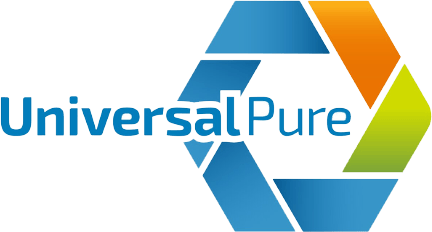

Gluten Intolerance Group Sponsors Gluten-free B2B Directory
ONLINE & OF NOTE
The Food and Agriculture Organization of the United Nations (FAO) and the World Health Organization (WHO) have produced a new series of eLearning courses on Codex Alimentarius. The courses are available to anyone who wishes to gain a better understanding of the Codex collection of food standards. The courses are suited for Codex Contact Points, government officials, food producers, consumer representatives, Codex observer organizations, and members of the scientific community. The courses are open access, available in several languages, and can also be downloaded.
The new series of eLearning serves as an interactive tool to improve stakeholders' knowledge on a range of topics to more effectively participate in the Codex Alimentarius Commission standard-setting process. The modular nature of each course allows learners to develop their knowledge according to their specific needs, interests, and time availability. Upon successful completion, a digital badge is issued to certify the competencies acquired in each course.
